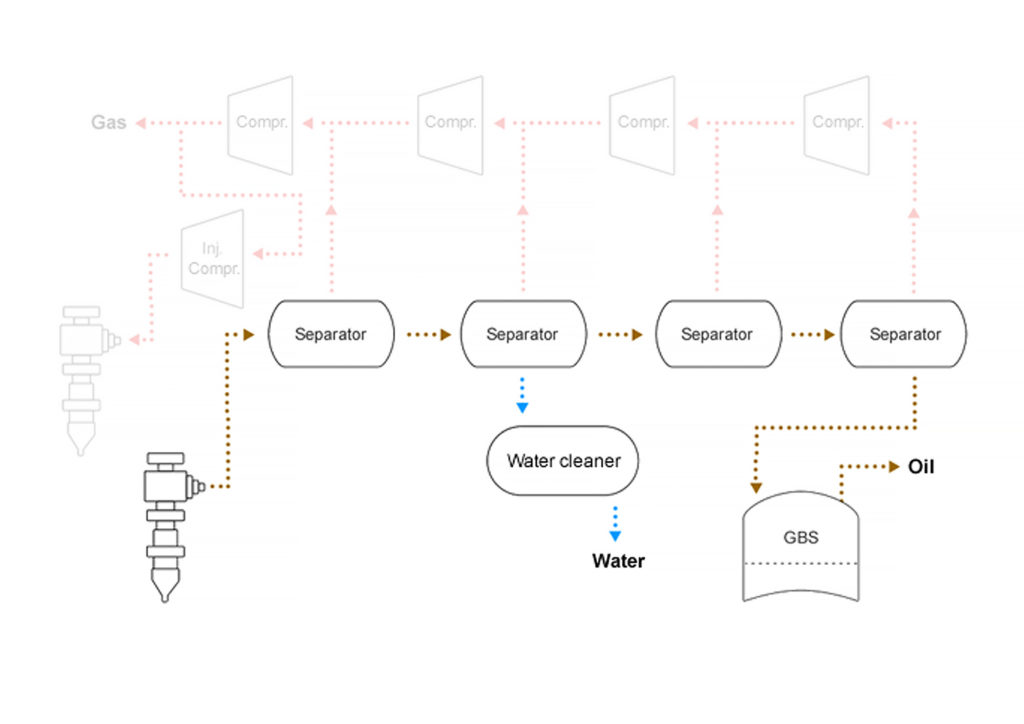Crude oil processing
Crude oil coming up from the reservoir must be separated from the associated gas and water, and have its pressure and temperature reduced through a multistage process. Only then can it be stored in the big cells in the gravity base structure (GBS) for each platform. Processing the oil is intended to stabilise it enough to allow tanker transport.

More about process
close
Close

 råoljebehandling, engelsk, illustrasjon,
råoljebehandling, engelsk, illustrasjon,